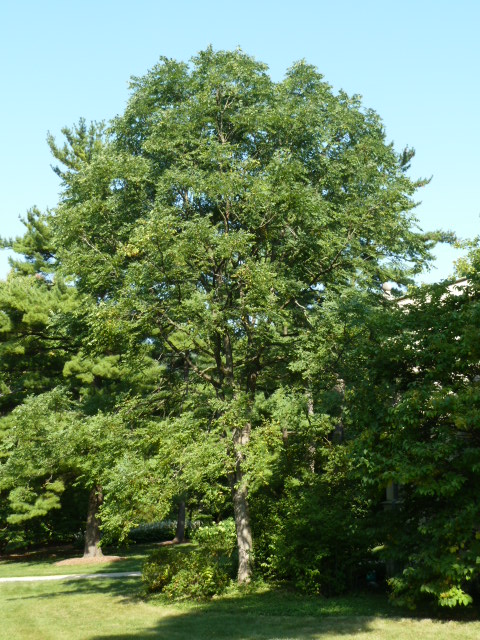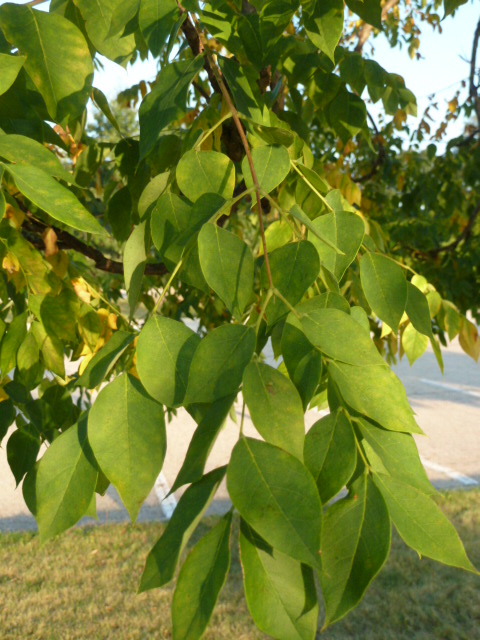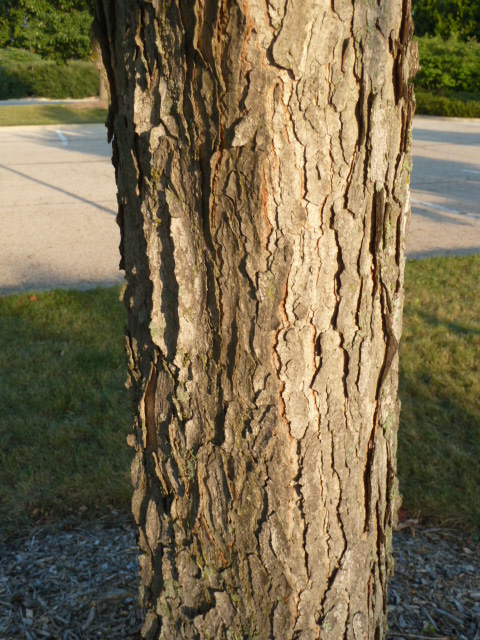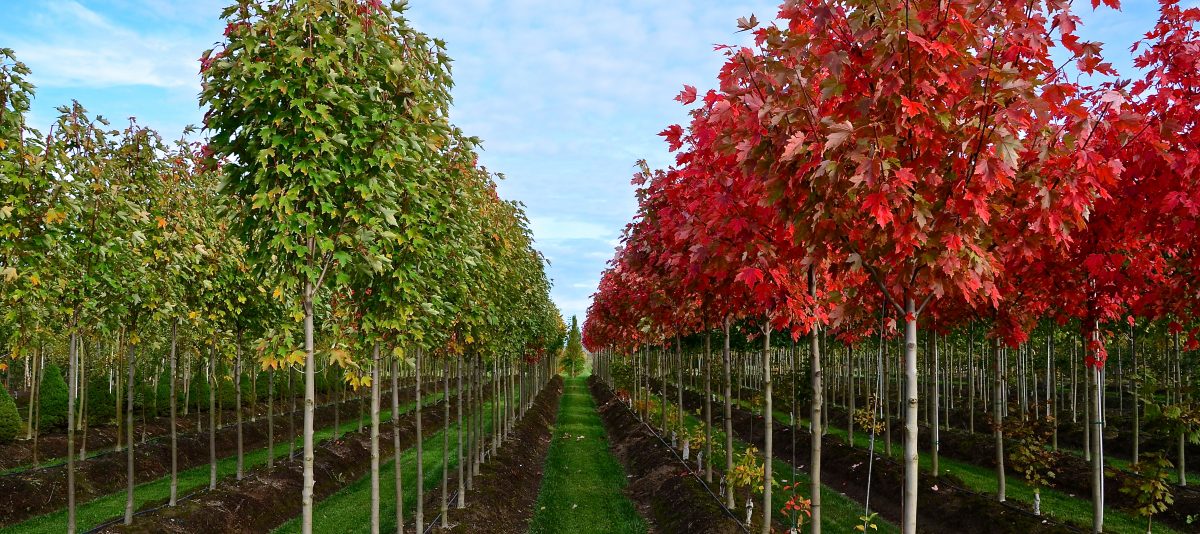Kentucky Coffee Tree
Gymnocladus dioicus
 Are you looking for a big, tough, rugged tree for a park, golf course, boulevard or stately home? Consider the under used Kentucky coffee tree. This native gem from the great Midwest is a large tree like no other. No two trees are alike, with ascending and outreaching limbs giving each its own unique form. Specimens can reach 60 or more feet tall with up to a 50 foot spread. The bark is hard and tough with firm scaly ridges. The form is irregular and not dense, casting a tall distinct shadow on sunny winter days. According to Dirr, early settlers in Kentucky boiled the seed to make a coffee substitute, bestowing its common name.
Are you looking for a big, tough, rugged tree for a park, golf course, boulevard or stately home? Consider the under used Kentucky coffee tree. This native gem from the great Midwest is a large tree like no other. No two trees are alike, with ascending and outreaching limbs giving each its own unique form. Specimens can reach 60 or more feet tall with up to a 50 foot spread. The bark is hard and tough with firm scaly ridges. The form is irregular and not dense, casting a tall distinct shadow on sunny winter days. According to Dirr, early settlers in Kentucky boiled the seed to make a coffee substitute, bestowing its common name.
The Kentucky coffee tree is also one of the latest trees to show leaves in the spring. The leaves are unique, being alternate and bipinnately compound up to 36” long and 24” wide. The leaflets are almost bluish green and bright yellow in the fall. The fruit is a brownish black leathery pod, 5 to 10” long, 1-1/2” to 2” wide containing dark hard shelled seeds embedded in a sticky pulp. The leaves and seed are said to be poisonous but Dirr also reported eating the sticky pod substance in his youth and living to tell about it.
Like most trees, it prefers deep, moist, well drained, somewhat acidic soils. But this tree will also tolerate limestone,droughty and tough urban conditions, another reason to have it on your tree list.
This all begs the question, what could a cultivar of the Kentucky coffee tree give us? The Espresso™ cultivar is seedless, which alleviates the concern for messy fruit, making it an excellent choice. ‘Espresso’ also has a more compact form than the species. It is available and a good selection to consider. I have also read of a narrow form Kentucky coffee tree but not seen it in production.
Speaking of production, this tree is not easy to grow. The roots are large, woody and broad. There were no fibrous roots on our bare root trees when planted in the nursery. Surprisingly, they all leafed out. Root pruning and root enhancing production, if possible, is recommended. The early structure of the tree can be equally stubborn to develop a balanced crown. 
Typical nursery production methods like tipping to establish new laterals and a new leader may only provide one or two additional limbs. Be reasonable and patient when selecting and growing the Kentucky coffee tree. It is worth the effort!
As always, let me know your experience with this tree.
ISA Certified Arborist #0135
ASCA Registered Consulting Arborist #356 CLICK HERE FOR MORE TREE PROFILES
Certified Tree Risk Assessor #PNW-0327
